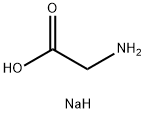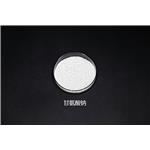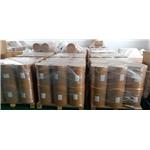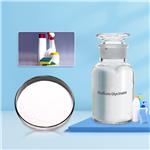Sodium glycinate is a non-essential amino acid. It is found primarily in gelatin and silk fibroin and used therapeutically as a nutrient. It is also a fast inhibitory neurotransmitter.
White or light yellow crystalline powder. Hygroscopic, easily soluble in water.
Sodum glycinate is a useful research chemical. It Inhibits spinal cord neurotransmitter, allosteric regulator of NMDA receptors.
Sodium glycinate is a substance with low toxicity, cost, and aggressiveness, and it is an effective cleaning option. Glycinate can react with silver compounds to form the polymeric compound silver glycinate (I), soluble in water. Glycinate also reacts with copper to form copper (II) glycinate, also soluble in water. Water solubility is due to the complexes’ ability to form hydrogen bonds. In addition to water solubility, which fulfills the criterion of keeping the cleaning reaction products within the solution, amino acids are capable of solubilizing silver and copper. Corrosion products can be removed using 0.1-mol L?1 sodium glycinate solution (pH 10) from artificially tarnished silver coins and naturally tarnished silver objects with a high silver content (90% or above)[1]. In the past sodium glycinate (SG) in glycerol was used in an immobilized liquid membrane in a closed loop life support systems, such as in spacecraft or space suits for removal of carbon dioxide from the atmosphere[2].
Sodium glycinate is a compound that can be obtained by reacting the amino acid glycine with sodium hydroxide. Because glycinate is soluble in water, it requires less water for cleaning, and it is not a toxic substance or mixture, according to the GHS (Thermo Fisher Scientific, Safety Data Sheet). However, as the pH of the medium makes it reactive with skin, handling the sodium glycinate solution requires gloves. Another difference between glycinate and thiourea is that the former does not cause wear on the metallic surface. Thiourea, however, causes micro-roughness. Thus, polishing can be required after the treatment.
[1] Ho-Jun Song. “Solubilities of carbon dioxide in aqueous solutions of sodium glycinate.” Fluid Phase Equilibria 246 1 (2006): Pages 1-5.
[2] Jo?o Cura D’Ars de Figueiredo Junior. “The Cleaning of Silver Objects With a Basic Solution of Sodium Glycinate: A Study on Artificially and Naturally Tarnished Silver.” Studies in Conservation 66 1 (2021): 375–383.



